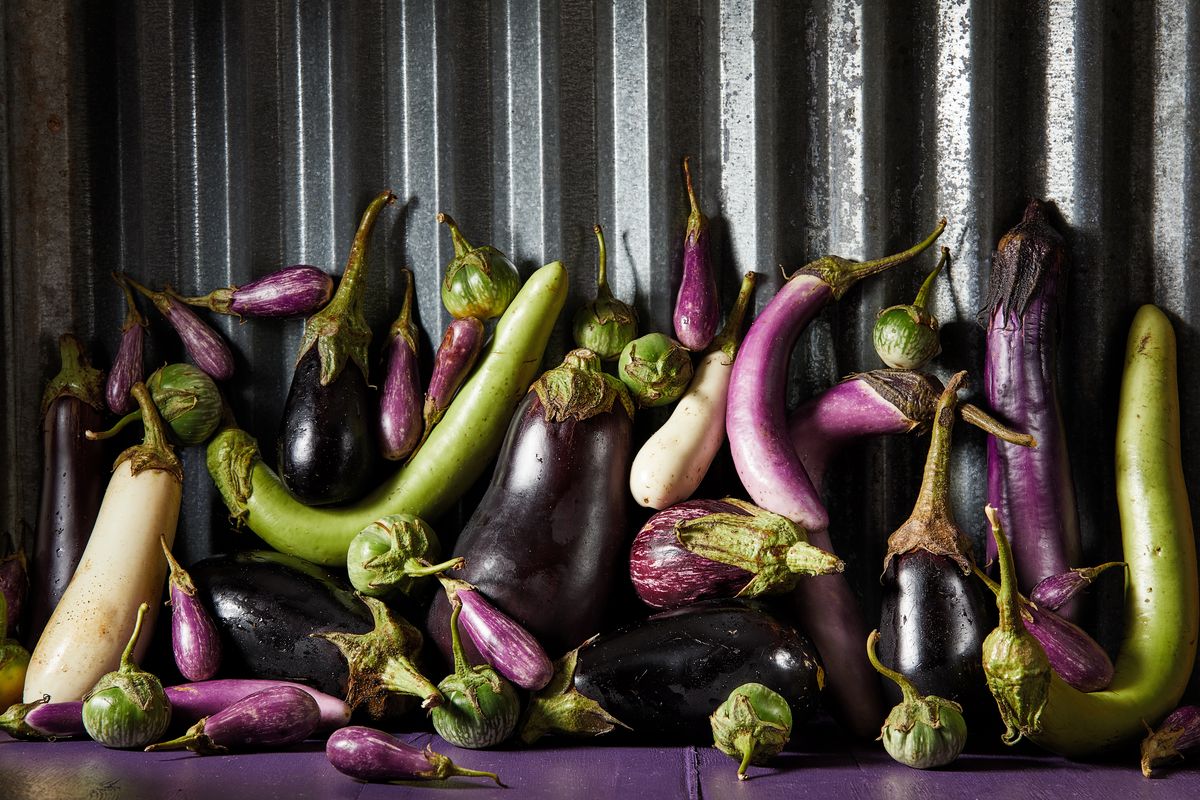Eggplant can be a love-or-hate proposition – here’s how to treat the fruit correctly

Mere moments into our conversation, chef and restaurateur Adrian Lipscombe perfectly sums up eggplant’s reputation: “It’s a really unique plant. Either you love it or you hate it.”
Count me among the lovers, though I did have to grow into it. Because it can be tricky to cook perfectly, people might find it intimidating, says Lipscombe, a Wisconsin resident who recently launched the 40 Acres & A Mule Project to help Black farmers buy agricultural land.
But there’s no reason to be afraid of this versatile fruit (yes, it is fruit). Here are your keys to success.
Picking. In “The New Vegetarian Cooking for Everyone,” cookbook author Deborah Madison offers this advice: “Regardless of variety or color, an eggplant should be smooth, firm and taut. A glossy skin and a bright green stem indicate freshness. There should be good heft in the hand. If it’s too light, the flesh may be spongy, seedy and bitter.” The larger the eggplant, the seedier it might be.
Storing. Sharon Tyler Herbst and Ron Herbst in “The New Food Lover’s Companion” suggest keeping eggplant in a cool, dry place for a day or two, then moving it into the refrigerator vegetable bin for longer storage. Eggplant is ethylene sensitive, which means it should not be stored near ethylene producers such as tomatoes, melons and stone fruit, which can hasten ripening or even rotting.
Varieties. Eggplant comes in many colors and sizes. Most of us routinely come across the large, dark purple globe eggplants and longer Asian varieties (Japanese tend to be darker and Chinese lighter). Shop at a farmers market or Asian market and you might find purple-and-white striped options, such as Indian or Fairy Tale; white, which come in multiple sizes; and the small, green, sphere-shaped Thai. Have a look at seed catalogs to get an idea for the visual differentiation.
“In terms of flavor, the lighter the hue, the more mild the eggplant – white eggplants being the most mild, followed by the pale green Thai fruits, magenta or purple and white striped varieties, then the dark purple globe eggplants,” Madison says. Longer Asian varieties also skew mild and less seedy, with thinner skin. Despite outward appearances, you won’t find much difference once you get to the flesh inside, so don’t be afraid to experiment with or substitute varieties.
Prepping. In “Keys to Good Cooking: A Guide to Making the Best of Foods and Recipes,” Harold McGee says, “Bitterness is not common in modern eggplants,” adding that if home cooks want to guard against it, however, they can salt eggplant before cooking. (Read more about the reasons for salting below.) Eggplant flesh darkens quickly, so if you’re making something where appearance counts, don’t let it sit out once cut. And whatever you do, if you’re roasting or grilling a whole eggplant, do not forget to prick holes in it. (Ask me – or my grill – how I know.)
Cooking. “We need to be braver” with eggplant, Lipscombe says. Sure, we know and love eggplant Parm, but try stepping outside your comfort zone. If you like fried green tomatoes, Lipscombe says, consider treating eggplant the same way, and maybe serve it with comeback sauce, too, a spicy Southern condiment that includes mayo, ketchup and hot sauce.
Lipscombe says you should play around with how thick you cut the eggplant. Thinner pieces will be softer. Layer long planks in a vegetable sandwich, or wrap them around a cheese and herb filling. Thicker pieces will be meatier with more chew, which make them a useful stand-in for meat. Madison says whole roasted eggplant can be torn into shreds. That made me want to try it in the same way folks have been experimenting with jackfruit, such as with barbecue or burritos.
Pair eggplant with fellow summer produce, especially tomatoes and herbs. Ratatouille is a great example. Consider textural contrast. Eggplant leans soft, Lipscombe says, so add crunchy elements to the mix, including almonds and pomegranate seeds.
As to cooking methods, Lipscombe says grilling is a favorite. Eggplant takes well to smoky flavors and high heat. When mashed, the grilled flesh is perfect for Middle Eastern baba ghanouj or Indian baingan bharta. In the absence of a grill, broiling can work wonders.
Stir frying, especially the longer varieties, is a great idea, as is pan frying. Eggplant is, however, notorious for acting like a sponge when it comes to oil. To prevent that from happening, McGee suggests getting rid of some of its capacity to soak things up by briefly microwaving it or salting it in a colander until it wilts, followed by a rinse to get rid of the excess salt.
If eggplant does take on too much oil, try heating it gently until the flesh shrinks, when some of the oil should be released, he says. Lipscombe suggests considering taking the salting step further by brining eggplant, which also can help you add more flavor through a bit of sugar and spices.
Don’t forget about braising, too. This is where eggplant’s inherent ability to soak up liquid and flavors is a good thing. I’m a big fan of eggplant Thai-style curries made with coconut milk. Ditto caponata.